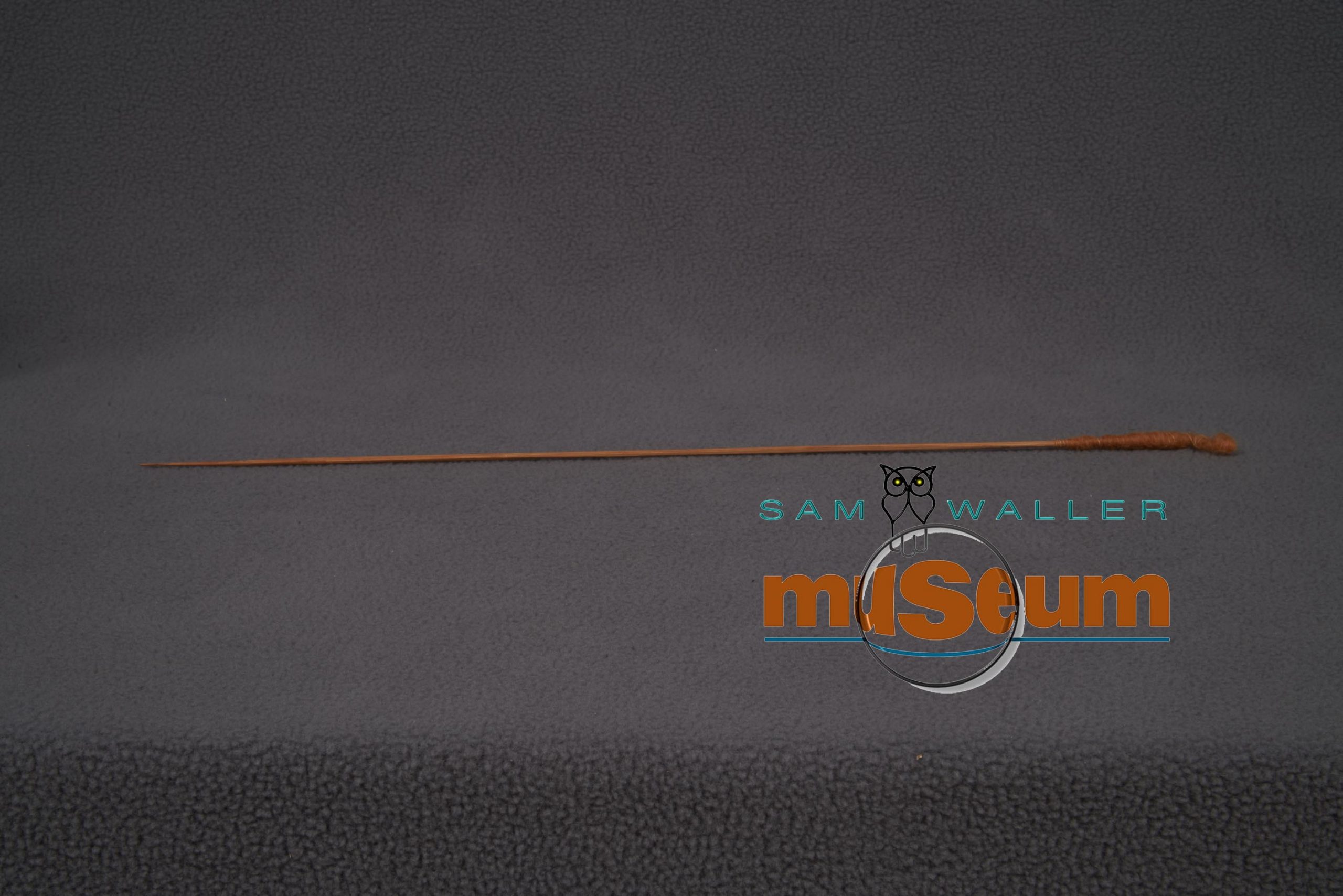Our featured object is a poison dart. It was brought back from South America in the 1950s and given to Sam Waller. According to the Merriam-Webster dictionary, the word toxic comes from several sources including “Late Latin toxicus, from Latin toxicum poison, from Greek toxikon arrow poison, from… toxikos of a bow, from toxon bow, arrow”. Poisoned arrows or darts have been used by people all over the world, including ancient Romans, Scythians, Indians and the Chinese. Various Indigenous tribes have used poisonous darts. One frog is commonly known as the Poison Dart Frog because it is used by Indigenous tribes in South America to poison their blow darts. Our poison dart may easily have been blown out of a blowgun. The poisoned dart has a string made up of vegetable fibres on the end.
Poisoned arrows, similar to poisoned darts, have been used for thousands of years and appear in myths and stories. For example, after Heracles shot a hydra, a mythical snake-like create, he dipped his arrows into the hydra’s poisonous blood, thus creating his own poisoned arrows. Later in life, he shoots a centaur with a poisoned arrow as the centaur is trying to attack Heracles’ wife, Deianira. The dying centaur, seeking revenge for his imminent death, gives Deianira his blood stained coat and tells her if she ever has a rival for Heracles’ affection, she should give Heracles the coat. Years later, Deianira, fearing she has a rival for Heracles’ affections, sends a servant to bring Heracles the dead centaur’s coat. Deianira is thus tricked into killing her husband, as the poisoned blood on the coat burns Heracles to death.


